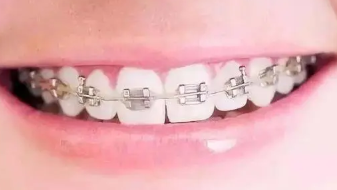Methods of orthodontics for adults
Methods of orthodontics for adults
In the United States and Canada, an estimated 1 million adults over the age of 18 are receiving orthodontic treatment. In this case, the knowledge of orthodontics becomes especially important for them.
To this end, we have invited professional dental plastic surgeons and authoritative experts in stomatology to answer your questions about adult orthodontics.
"Looking back and smiling, you are always happy." Having a set of neat and beautiful teeth will always make people smile brightly, but there are still many adults who are faced
with the problem of crooked teeth and misaligned teeth. They are anxious about this and hope that one day they can have star-like teeth. Therefore, adult orthodontic treatment has become more and more common.

★Q: Why do adults with deformed teeth need orthodontic treatment?
Answer: In real life, many adults have not received orthodontic treatment due to various reasons during the growth and development period. Many of them have dental deformity problems,
which affect their social life and work. The incidence of caries, gum and periodontal diseases is also relatively high. In severe cases, there are temporomandibular joint problems,
concurrent headaches and other symptoms, which interfere with physical health and reduce the quality of life.
★Q: What methods are available for adult orthodontics?
A: There are two types of orthodontic surgery. The most popular Korean surgical orthodontics. Korean-style surgical orthodontics is mainly suitable for the correction of uneven dentition or alveolar deformity in adults.
It is favored by most patients because of its 1-hour operation time, less trauma, and the advantages of changing the shape of the maxillofacial surface and no need for braces.
The other is traditional surgical orthodontics. Because it involves the movement of large bone blocks, the operation time is long, the trauma is large, and complications such as dead pulp teeth are prone to occur,
it will make consumers daunted.
As for braces correction, it is suitable for minors. Adults have basically ended their vigorous growth period. If traditional braces are used for correction, it will take a long time,
and the time for wearing a retainer after treatment is also relatively long, and the effect cannot reach the effect of juvenile orthodontics, and there will be a phenomenon of rebound.



